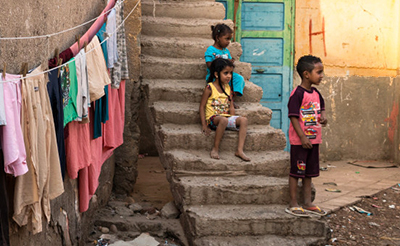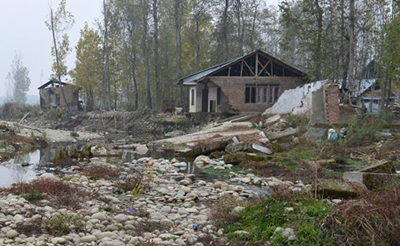Some hazards in the environment can directly affect health – air pollution can cause respiratory disease, lead paint in houses can affect a child’s development, and pesticide exposure is attributed to higher rates of birth defects, developmental delays, leukemia, and brain cancer among farm worker children.
Communities rely on journalists for alerts of these hazards, as well as information on the measures people can take to protect themselves or advocate for regulation.
But journalists now have a more difficult job explaining the potentially disastrous health effects of climate change, as there is not always a direct correlation that can be drawn to disease. According to the Center for Health and the Global Environment at Harvard Medical School, in the coming years, carbon dioxide in the environment is likely to increase rates of allergies, asthma, heart disease and cancer, among other illnesses.
Rising global temperatures mean that diseases from warmer climates may show up in cooler parts of the world where the population does not have natural defenses against them. Loss of rainforest caused by warming means less biodiversity and access to undiscovered medicines. Coastal flooding from rising seas can spread disease, as well as dislocation. Droughts caused by climate change may affect food production, leading to malnutrition.
“Climate change is a health crisis, too,” says Imelda Abano, Pacific Region Content Coordinator for Internews’ Earth Journalism Network (EJN). “Climate-related events, especially in poorer countries with high population density such as the Philippines, exacerbate the spread of diseases like dengue and malaria. The media needs to continuously report on the health impacts of the changing climate in order to increase public awareness, influence policymakers to strengthen the country’s resilience as well as improve public health.”
Journalists need the tools and the scientific background to report accurately on the potential health hazards of global warming so that local communities can take protective action and so that policymakers and governments are motivated to act on the issue.
“The most difficult part of reporting on climate change and health is the lack of adequate research,” says Ramesh Bhushal, EJN’s South Asia Content Coordinator. “For example, there are reports that indicate mosquitoes are moving up to higher altitudes in the Himalayas in South Asia increasing the cases of malaria. One possible reason could be increasing temperatures, but there are other issues like newly built roads – mosquitoes might be making their way up on vehicles coming up from lower altitudes. Journalists need a better understanding of the issues and report carefully when it comes to climate change and health issues.”
EJN has been training environmental reporters and establishing journalism networks around the world for fifteen years. EJN also provides grants for journalists to research issues and produce in-depth reports about the environment in their local communities. Below is a sampling of stories that EJN-supported journalists have written about health and the environment:

Drinking water salinity impacting maternal health in Bangladesh
Coastal communities such as those in Bangladesh and Florida face increasing threats of drinking water contaminated by salty water from rising oceans. Health workers in Bangladesh have started noticing the effects of drinking salty water, which increases blood pressure, on maternal and infant health.
Read more >

Rising temperatures scorch Egypt’s rural poor
In Egypt, heat waves, which are becoming more common and prolonged due to global warming, lead to an increase in death from heat stroke, dehydration, high blood pressure, and heart attacks. Pregnant women and young children are particularly susceptible to heat stroke as well as parasitical diseases that show an uptick during heat waves.
Read more >

Kashmir: Disorder after disaster
As well as physical health, disasters related to climate change can also cause devastating psychological effects such as in Kashmir when a flood wiped out prized agricultural land. Families that had thrived on their farms were suddenly left without resources and a future.
Read more >

Climate change threatens dolphin habitats in Ganga
In India, where the presence of dolphins is a sign of a healthy river ecosystem, climate change is affecting the ecology of the Ganga River, diminishing its fish stock thus reducing the food supply for dolphins and threatening the dolphins with new diseases. This problem affects human health as well. Read more >

Deforestation linked to health problems
In Cambodia, researchers found that a ten percent hike in the loss of dense forest was estimated to be associated with an increase of 14.1 percent in the incidence of diarrhea in children younger than 5 years old per household. Although it is not clear why this is happening, it’s possible that cleared forests create habitats that are more suitable for mosquito breeding . Read more >
“Local communities need information they can use and act on with regard to their health and their local environment,” says Ida Jooste, Internews’ Global Health Media Adviser. “To get communities accurate, in-depth information, journalists need training in investigative, data-driven journalism and access to scientific data. They need to report in a way that helps citizens make the connections between the environment in which they live and their family members’ health so they can take local action, as well as holding government officials to account on climate change and other environmental hazards.”
